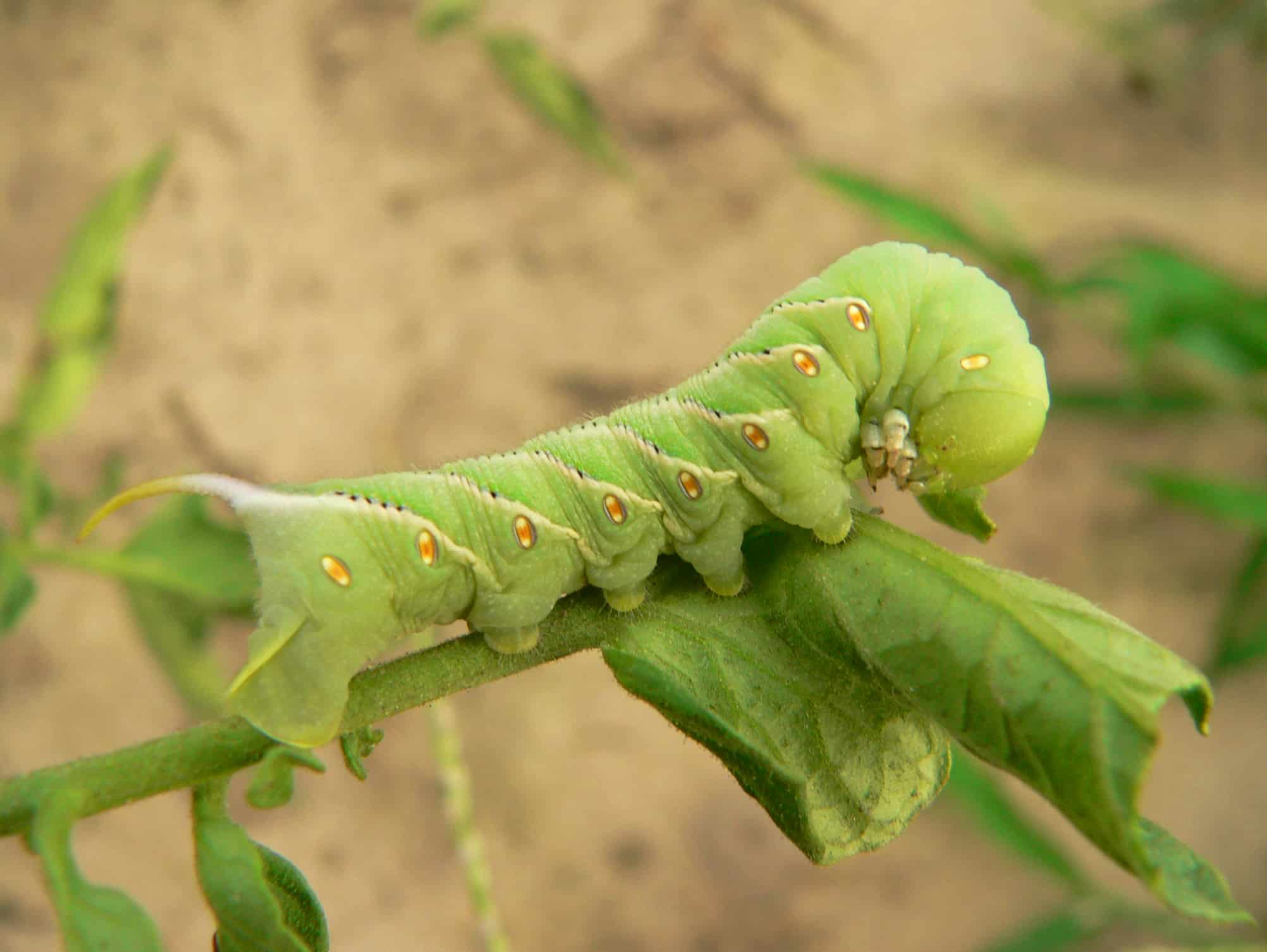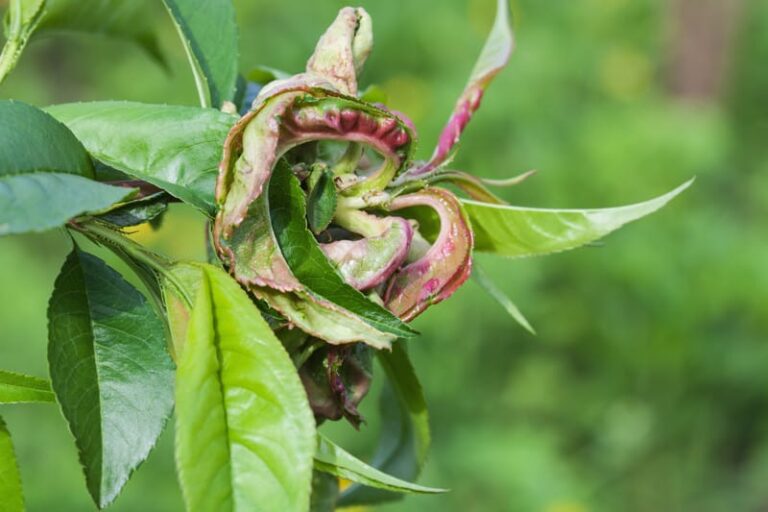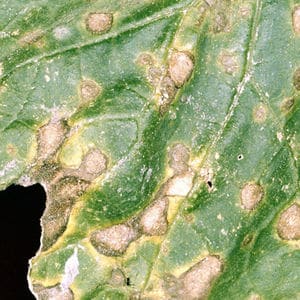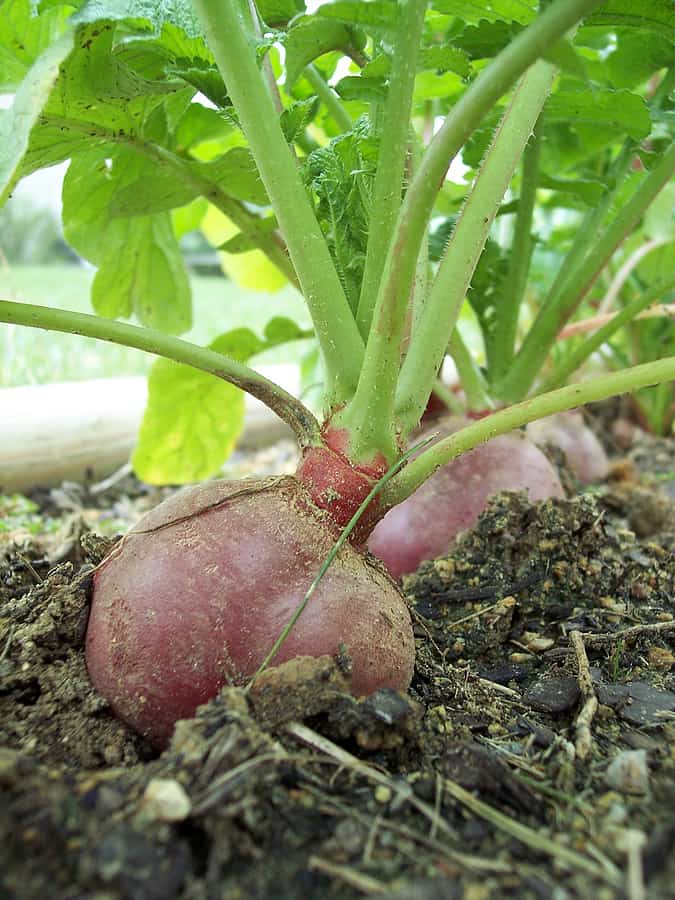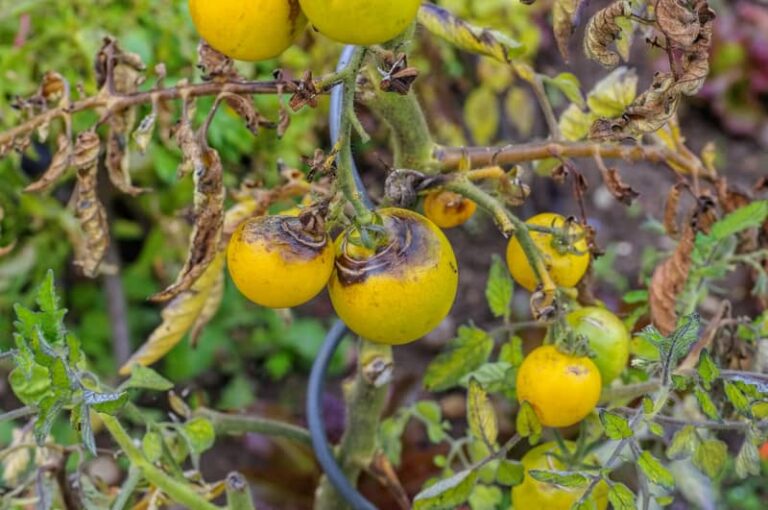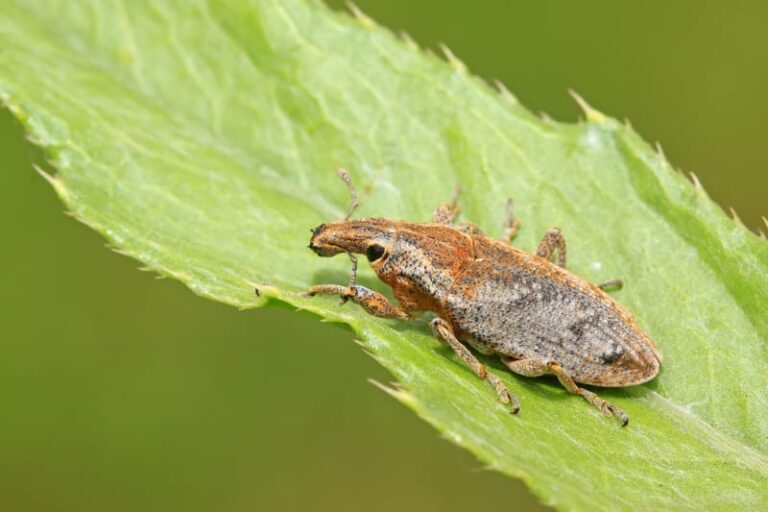Tomato Growing Problems: Pests, Diseases, and Solutions
Growing tomatoes is incredibly rewarding, but even the most experienced gardeners face challenges along the way. Over the years, I’ve dealt with everything from hornworms devouring my plants overnight to sudden outbreaks of blight that threatened an entire season’s crop. Understanding the most common tomato-growing problems—whether caused by pests, diseases, or environmental stress—has helped me prevent major losses and keep my plants healthy. With the right knowledge and a proactive approach, you can troubleshoot issues early and still enjoy a bountiful harvest.
Tomatoes are sensitive plants, and problems can arise at any stage of growth. Some issues, like blossom end rot or yellowing leaves, are signs of nutrient imbalances or inconsistent watering. Others, such as aphid infestations or fungal infections, require swift action to prevent them from spreading. Through years of hands-on gardening, I’ve learned which preventative measures work best and which organic and practical solutions can save a struggling plant. In this guide, I’ll walk you through the most common tomato-growing problems, how to identify them, and effective ways to fix them.
Common Tomato Pests and How to Control Them
1. Aphids
Signs: Tiny green, black, or red insects clustering on new growth and undersides of leaves.
Damage: Aphids suck sap from the plant, causing curling leaves and stunted growth. They also leave behind a sticky residue called honeydew, which can lead to sooty mold.
Solution: Spray plants with a strong stream of water to dislodge aphids, introduce beneficial insects like ladybugs, or use insecticidal soap or neem oil.
2. Tomato Hornworms
Signs: Large green caterpillars with white markings, often blending into the foliage.
Damage: They strip leaves from the plant and can eat entire branches if left unchecked.
Solution: Hand-pick hornworms off the plant and drop them into soapy water. Encourage natural predators like parasitic wasps and birds. If infestations are severe, use Bacillus thuringiensis (BT), an organic caterpillar control.
3. Whiteflies
Signs: Tiny white flying insects that scatter when you shake the plant.
Damage: They suck plant juices, causing yellowing and weakening of leaves. Whiteflies also transmit plant diseases.
Solution: Use yellow sticky traps, apply neem oil or insecticidal soap, and introduce beneficial insects like lacewings or ladybugs.
4. Cutworms
Signs: Seedlings mysteriously cut off at the base.
Damage: Cutworms chew through young tomato stems at soil level, often killing the plant.
Solution: Place cardboard collars around seedlings, sprinkle diatomaceous earth at the base of plants, or hand-pick them in the evening.
Common Tomato Diseases and How to Manage Them
1. Early Blight (Alternaria solani)
Signs: Dark brown spots with yellow halos on lower leaves.
Damage: Leaves yellow and drop, reducing plant vigor and fruit production.
Solution: Remove affected leaves, improve air circulation by pruning, and apply copper fungicide as a preventive measure.
2. Late Blight (Phytophthora infestans)
Signs: Large, irregular brown lesions on leaves, stems, and fruit.
Damage: Late blight spreads quickly, leading to plant collapse and fruit rot.
Solution: Remove and destroy infected plants immediately. Avoid overhead watering and apply copper fungicide preventatively if conditions are wet and humid.
3. Blossom End Rot
Signs: Sunken, leathery brown or black spots on the bottom of tomatoes.
Damage: Affects fruit quality, making it inedible in severe cases.
Solution: Maintain consistent soil moisture, avoid excessive nitrogen fertilizers, and add calcium-rich amendments like crushed eggshells or gypsum.
4. Fusarium Wilt
Signs: Yellowing and wilting of leaves, usually starting on one side of the plant.
Damage: Causes plant decline and eventual death as the fungus clogs water-conducting tissues.
Solution: Plant resistant varieties (look for “F” on seed packets), practice crop rotation, and remove affected plants to prevent soil contamination.
Environmental Stressors That Affect Tomato Growth
1. Sunscald
Signs: White or yellow patches on fruit, especially on exposed sides.
Solution: Provide light shade during extreme heat, ensure good foliage coverage, and avoid excessive pruning.
2. Cracking and Splitting
Signs: Deep cracks or splits in tomato skin.
Solution: Water consistently to prevent rapid fruit expansion after dry spells. Mulch around plants to retain moisture.
3. Leaf Curl
Signs: Leaves rolling inward, often during hot or dry conditions.
Solution: Keep soil evenly moist and protect plants from excessive heat with shade cloth if necessary.
Best tips on How to Grow Tomatoes.
Pro Tips: More Details on Tomato Problems
Tomato plants are susceptible to several diseases and pests. Preventing problems is the best-growing strategy.
- At the end of the season get rid of crop residues and cultivate the soil to expose insect larvae.Here is a troubleshooting list of possible tomato problems with brief control suggestions.
- Keep the garden free of weeds that can harbor pests and diseases.
- Use floating row covers at planting time to exclude early-season pests.
- Prune and train tomatoes early to provide good air circulation.
- Pick off any leaves that show signs of disease or insect attack.
- Later, keep an eye on plants as they blossom and set fruit; water evenly and regularly and mulch to conserve soil moisture.
Tomato leaf problems
Leaves are yellowish and slightly curled with small shiny specks
Aphids are tiny, oval, yellowish to greenish pear-shaped insects that colonize the undersides of leaves. They leave behind sticky excrement called honeydew which can turn into a black sooty mold. Use insecticidal soap.
Older leaves yellow and die; yellowing begins between the main veins of leaves
Verticillium wilt is caused by a soil fungus. It favors cool soil and air temperatures. Grow resistant varieties (V or VF) and avoid planting where tomatoes, potatoes, peppers, eggplant, and cucumber family plants have been recently growing. This disease is most evident in hot weather when the plant is loaded with fruit and water is short.
Leaves turn yellow and then brown from the bottom up; the plant loses vigor.
Root-knot nematode is a microscopic eelworm that attacks feeder roots. Plant nematode-resistant varieties labeled VFN. Rotate crops. Remove old plant debris from the garden.
Lower leaves are yellow, with tiny brown specks on the leaves
Smog or air pollution. Some tomatoes grow poorly where the air to polluted.
Leaves appear scorched and wilted
Leafhoppers are green, brown, or yellow bugs to ⅓-inch long with wedge-shaped wings. They jump sideways and suck the juices from plants. Use insecticidal soap. Cover plants with floating row covers to exclude leafhoppers.
Water-soaked spots on leaves; spots become circular with gray centers
Leaf spot or Septoria leaf spot is a fungus disease. Plant disease-resistant varieties. Rotate crops. Keep the garden free of plant debris. Apply copper dust or liquid copper spray every 7 to 10 days.
Leaf veins turn purple and leaves curl downward
Curly top virus is spread by leafhoppers. The leaves will become thick and leathery or brittle and the plant stops growing. Once the virus hits lift and throw away the plants. Control leafhoppers.
Leaves turn purple
There is a phosphorus deficiency in the soil. The leaves may also be bluish-green, bronzed, or reddish along the veins and margins. Add phosphorus-rich bonemeal to the soil.
Lower leaves have a bronze, oily color
Tomato russet mite is not visible to the eye but you will see them with a hand lens; they are whitish-yellow and pear-shaped. Avoid growing tomatoes near petunias. Treat with sulfur.
Leaves have an irregular light and dark green pattern leaves are narrow and wrinkled
The tobacco mosaic virus can be spread by tobacco plants and smoking. There is no cure for the virus. Plant disease-resistant varieties (TMV on the label). Infected plants can produce edible fruit but the size and yield are reduced.
Trails and tunnels in leaves
The leafminer larvae tunnel inside leaves. Destroy infected leaves and cultivate the garden to destroy larvae and keep adult flies from laying eggs. Cover crops with floating row covers.
Small holes in the leaves of seedlings
Flea beetles eat small holes in the leaves of seedlings and small transplants. In the worst case, the entire plant is destroyed. Flea beetles usually concentrate on seedlings. Healthy tomatoes can tolerate beetle damage.
Leaves eaten, small to large holes eaten in fruit
The hornworm is a green caterpillar from 3 to 5 inches long with white stripes and a horn on its rear end. It is the larvae of a mottled gray or brown moth with orange spots. Handpick and destroy hornworms. Use Bacillus thuringiensis and parasitic wasps.
Leaves eaten off the plant
Colorado potato beetles or vegetable weevils attack many vegetables. They are small and dark-colored and do not fly, so they are slow to spread. Hand-pick adult beetles off of the plant. Keep the garden clean. Use rotenone in severe cases.
Whole plant problems
Young plants are cut off at the ground
Cutworms can be found at the base of plants, they are small curled grayish grubs. Handpick and destroy cutworms and place a cardboard collar around young plants.
Plants produce a lot of lush foliage, but little or no fruit
Several possible causes: (1) too much nitrogen in soil: use a phosphorus-rich fertilizer; avoid too much nitrogen; (2) overwatering: allow the soil to dry to a depth of 4 inches before watering again; (3) temperatures are too low: cover plants with plastic covers; (4) inadequate pollination: lightly tap plants at flowering time to increase pollination.
Blossoms fall off
There are several possible reasons: (1) night temperatures are too low, less than 55°F (13°C): use a hormone spray to improve fruit set during low temperatures and keep soil evenly moist; (2) day temperatures are too high, greater than 90°F (32°C): there is no solution, temperatures must drop; (3) smog during the blossoming period: tap on blossoms 3 times a week when flowers are open to assist pollination; (4) too much nitrogen in the soil: feed plants properly; (5) too much shade: plant tomatoes in full sun; (6) early blossoming: don’t plant too early, early blossoms will not set fruit; (7) the variety is not adapted to your region: get regional suggestions from a garden center or the cooperative extension.
Plant turns pale yellow with brown lesions on leaves and brown stripes on stems
The spotted wilt virus is spread by thrips. You may seed circular light areas or bumps on fruit. The plant will eventually die. Remove and destroy infected plants. Keep weeds down; they host thrips.
Plant yellows beginning on one side or branch, yellowing spreads; plant wilts
Fusarium wilt is a soil fungus that infects only tomatoes, usually where the soil is warm. If you cut the plant at the base, the main stem will be dark reddish brown instead of ivory color. Grow resistant varieties (F or VF).
Plants are slow growing and wilt; roots look water-soaked or brown and dry
Phytophthora root rot is caused by a soil fungus. This disease is common in heavy, clay soils. Keep the watering short and add organic matter to the planting bed.
Cottony white growth on the stem near the soil line, plant wilts
Southern blight is caused by a fungus. Southern blight gets its name because it spreads rapidly in humid weather in temperatures greater than 85°F. The fungus feeds on decaying organic matter. Keep the garden clean of plant debris. Lift and destroy infected plants. Rotate crops.
Leaves and stems look water soaked and a grayish fungus grows on the undersides of leaves
Late blight is caused by a fungus that favors high humidity and temperatures around 68°F (20°F). Keep the garden free of plant debris and avoid overhead irrigation.
Round white powdery spots and coating on leaves
Powdery mildew is caused by fungal spores. Spores germinate on dry leaf surfaces when the humidity is high; spores do not germinate on wet leaves. Common in late summer or fall but does not result in the loss of the plant. Avoid water stress. Pick off infected leaves.
Dark brown to black blotches surrounded by yellowing along the edges of leaves
Bacterial speck develops where the weather is wet and cool, less than 70°F (21°C). Delay planting until temperatures warm. Rotate crops and avoid overhead watering.
Worm in immature or ripe tomato fruit
Tomato fruitworm (corn earworm) is a pale caterpillar with a brown head about 1¾ inches (4.5 cm) long; it is the larvae of a night-flying moth with brownish or olive wings. Bacillus thuringiensis can be used to control worms, but control is difficult unless the infestation is severe. This tomato fruitworm is also known as the corn earworm.
Tiny white-winged insects around plants
Whiteflies will congregate on the undersides of leaves and fly up when disturbed. Introduce beneficial insects into the garden.
Tomato fruits
The fruit is cracked radially from the top toward the bottom of the fruit
Cracking is caused by uneven soil moisture–the soil is either too wet or too dry. This often occurs when temperatures are greater than 85°F. Allow foliage to shade fruits below. Mulch to keep soil moisture even. Water thoroughly and then allow the soil to dry to a depth of 4 inches and then water again.
A brown dashed scar or zipper streak appears on the side of the fruit
Zipper-like scars appear after blossoms stick to tiny fruit when the weather is too wet and cool at flowering time. Pull flowers off of fruit when the fruit is very small.
Fruit is misshapen and distorted
This happens when the plant is exposed to temperatures below 55°F at the time of blossoming. Keep tomatoes warm with cloches or row covers early in the season. Plant later after temperatures have warmed. Grow early lower temperature varieties: Early Girl, Rocket, Earliana.
The fruit turns light brown and leathery on the side exposed to the sun
Sunscald is caused by overexposure to the sun. don’t prune away foliage above fruit clusters.
Tunneling in fruit
Potato tuberworm is 3/8 inches (9.5 mm) long caterpillar the larvae of a moth that frequents potatoes. Avoid planting tomatoes where potatoes were planted the year before. Destroy potato plant debris.
Small worms tunnel into the fruit
Tomato pinworm is a very small leaf-mining caterpillar about ¼-inch (6mm) long that tunnels into tomato fruit. It leaves a small entry hole which allows the disease to enter the fruit. Remove and destroy tunneled leaves. If fruit is attacked it must be thrown away. Keep the garden clean of plant debris and weeds where pinworms overwinter.
The fruit surface is eaten or the fruit is hollowed out
Snails feed on the surface of the fruit. Slugs hollow out the fruit. Keep tomatoes off the ground. Set out beer traps for snails and slugs.
Fruits are malformed with ugly scarring
Catfacing is caused by cool and cloudy weather at the time of blossoming. Weather causes blossoms to stick to small fruits and create distortions. Pull blossoms off of fruit when the fruit is still small. Plant varieties that resist catfacing, ‘Big Set’ and ‘Burpee’s VF’.
Dark, leathery areas appear on the blossom end of the fruit
Blossom end rot is caused when there is too little moisture in the soil, particularly when temperatures are greater than 90°F. Sometimes there is a calcium deficiency in the soil which keeps roots from taking up water. Mulch planting beds to keep soil moisture even; water regularly. Test soil for calcium deficiency.
Cloudy cream or yellowish colored spots without definite margins on ripe fruit and the tissue underneath is spongy
Stink bugs are gray or green shield-shaped bugs about ¼-inch long; they feed on fruits. Remove garden debris and weeds where bugs can overwinter. Hand-pick egg masses and bugs and destroy them.
Sunken water-soaked areas on fruit; fruit shrivels and becomes watery
Anthracnose and Alternaria fruit rot are fungal diseases that cause dark, brown, or black sunken, circular spots on stems, leaves, and fruits. Keep fruit off the ground and destroy rotting fruit. Rotate crops.
Related articles:
Vegetable Garden Diseases Problem Solver
Vegetable Garden Organic Weed Control
Epsom Salt, Milk, and Organic Fertilizers for Tomatoes and Peppers
Tomato Growing Hub
Start here: The Ultimate Tomato Growing Guide: From Seed to Harvest
Growing Tips
- Getting Started with Tomatoes: A Gardener’s Guide to Success
- How to Choose a Tomato for Your Garden
- Growing Early-Season Tomatoes for Great Taste
- Heirloom and Hybrid Tomatoes
Planting Tips
- Tomato Seed Starting Tips
- Mastering Tomato Seed Starting: How to Grow Strong and Healthy Plants Indoors
- When to Plant Tomatoes: A Gardener’s Guide to Timing and Success
- Plant Tomatoes for a Thriving Crop: Sun, Soil, and Spacing
- How to Transplant Tomato Seedlings: A Gardener’s Guide
- Growing Tomatoes in Containers
Tomato Care
- Watering and Feeding Tomatoes: Expert Tips for a Healthy, Productive Crop
- Best Ways to Support Your Tomato Plants
- Pinching and Pruning Tomatoes: A Gardener’s Guide to Healthier, More Productive Plants
- How to Prune Tomatoes
- Grow Tomatoes on Stakes
- Best Companion Plants for Thriving Tomatoes: What Works & What to Avoid
Pest & Disease Control
- Tomato Growing Problems: Pests, Diseases, and Solutions
- How to Prevent Blossom Drop — Tomatoes and Peppers
- How to Identify Early Blight, Late Blight, and Leaf Spot on Tomatoes
Harvest & Preparation
- When and How to Harvest Tomatoes for the Best Flavor
- How to Ripen Tomatoes
- Planting Tomatoes for a Long Harvest
- Planting Tomatoes for a Fall Harvest: How to Grow Fresh Tomatoes Before Frost
- Tomato Flavor Explained
- Nine Ways to Cook and Serve Tomatoes
Garden Planning Books at Amazon:

